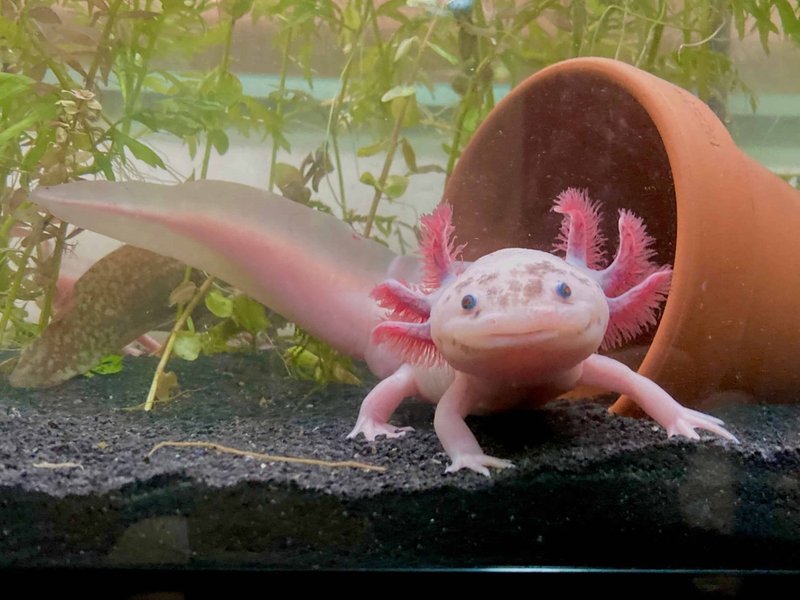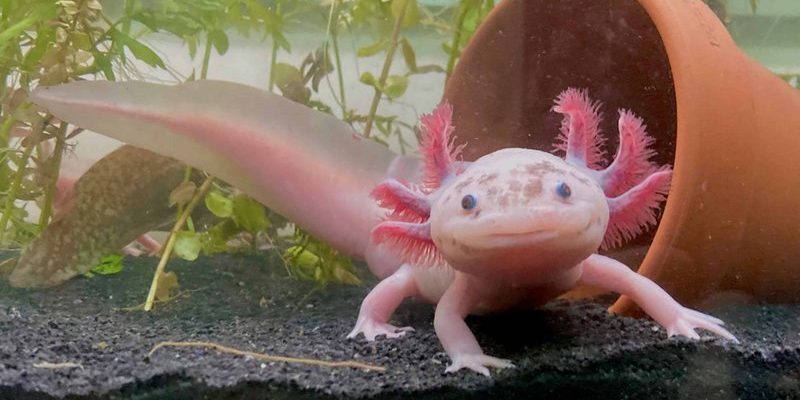
The axolotl is often referred to as the “Mexican walking fish,” but it’s not a fish at all; it’s an amphibian. These creatures are unique for their ability to regenerate lost limbs, which has captivated scientists and nature lovers alike. The symbolism attached to the axolotl spans from ancient Aztec mythology to contemporary art and science. In today’s blog post, let’s unpack the significance of this little creature and see why it has earned a spot in the hearts of many around the globe.
The Axolotl in Aztec Mythology
The axolotl has deep roots in Aztec culture. Often associated with the god of fire and wisdom, Xolotl, this amphibian was believed to embody the duality of life and death. In Aztec mythology, Xolotl transformed into the axolotl to escape being sacrificed. This tale highlights the creature’s connection to the underworld and the concept of transformation, which is fascinating in itself!
Interestingly, the axolotl’s ability to regenerate lost body parts reflects the cultural symbolism of rebirth and renewal. In a way, it served as a metaphor for the cyclical nature of life—a core theme in many indigenous narratives. How many other creatures can boast such a compelling story that ties them to the very essence of life and death?
Symbolism of Regeneration
The axolotl is a living miracle thanks to its unique ability to regrow limbs, a feature that has made it a symbol of renewal. Think about how inspiring it is to know that this creature can heal itself while humans often struggle with the scars of our past. This regenerative power resonates deeply with people seeking hope and healing in their lives. It’s easy to see why the axolotl has become a beacon of resilience.
This connection to regeneration goes beyond the physical realm. Many people see the axolotl as a reminder that we are all capable of growth and change, no matter the challenges we face. In today’s world, where mental health and self-acceptance are more important than ever, the axolotl’s story offers a beautiful metaphor for personal transformation.
The Axolotl in Modern Science
You might be wondering how the axolotl transcends cultural boundaries to make its mark in the world of science. In fact, researchers are fascinated by its robust healing abilities. Scientists study the axolotl to unlock secrets behind regeneration, which could lead to breakthroughs in medicine for humans. Imagine if we could learn how to heal from injuries or disease as effortlessly as this tiny amphibian!
As scientists dive deeper into the genetic makeup of the axolotl, they discover more about cellular functions and the processes involved in regeneration. This research not only benefits human health but also sheds light on how life evolves and adapts. Given its small size, the axolotl serves as a model organism, making it easier for researchers to conduct experiments and draw significant conclusions. So, in a way, the axolotl is contributing to advancements that could transform medical practices!
Environmental Significance
The axolotl isn’t just important for cultural and scientific reasons; it also plays a role in our ecosystems. Native to the lakes of Xochimilco in Mexico City, these creatures are integral to their environment. Unfortunately, due to habitat loss, pollution, and invasive species, the axolotl is now critically endangered. This decline raises awareness about biodiversity and the importance of protecting our natural resources.
Efforts to conserve the axolotl can teach communities about the interconnectedness of all living things. When people understand that protecting one species can have a ripple effect on the entire ecosystem, it fosters a sense of responsibility toward the environment. Organizations and local communities are working together to create awareness and implement conservation practices that ensure the survival of this unique amphibian.
The Axolotl in Art and Pop Culture
Art, as a reflection of culture, has embraced the axolotl in various forms. From paintings to plush toys, this creature has made its way into our hearts and homes. Artists often portray the axolotl as a symbol of whimsy and curiosity. Have you ever seen an adorable axolotl-themed accessory? You might find everything from keychains to T-shirts featuring this charming amphibian!
In film and television, the axolotl sometimes appears as a representation of magic or mystery. Its unusual appearance and gentle demeanor capture the imagination of audiences worldwide. As people continue to engage with the axolotl through various media, its cultural significance is likely to grow, bridging gaps between generations and cultures.
Educational Importance
Lastly, the axolotl offers a fantastic opportunity for education. Schools and educational programs often use this creature to teach children about biology, ecology, and conservation. By introducing students to the axolotl and its unique traits, educators can instill a sense of wonder and respect for nature.
Learning about the axolotl can also spark conversations about the environment and the importance of safeguarding endangered species. When children bond with these creatures, they may feel inspired to become environmental advocates, ensuring the axolotl’s legacy continues for future generations.
The axolotl is far more than just a quirky animal; it’s a powerful symbol of regeneration and resilience, deeply rooted in culture, science, and art. Its rich history and ongoing relevance portray a creature that reminds us of the beauty of life’s cycles and the importance of protecting our natural world. As we continue to learn from and appreciate the axolotl, we can find motivation in its story—whether we’re seeking healing, inspiration, or simply a rare glimpse into the wonders of nature. So, next time you see an axolotl, take a moment to appreciate the layers of meaning hidden beneath that adorable smile!

